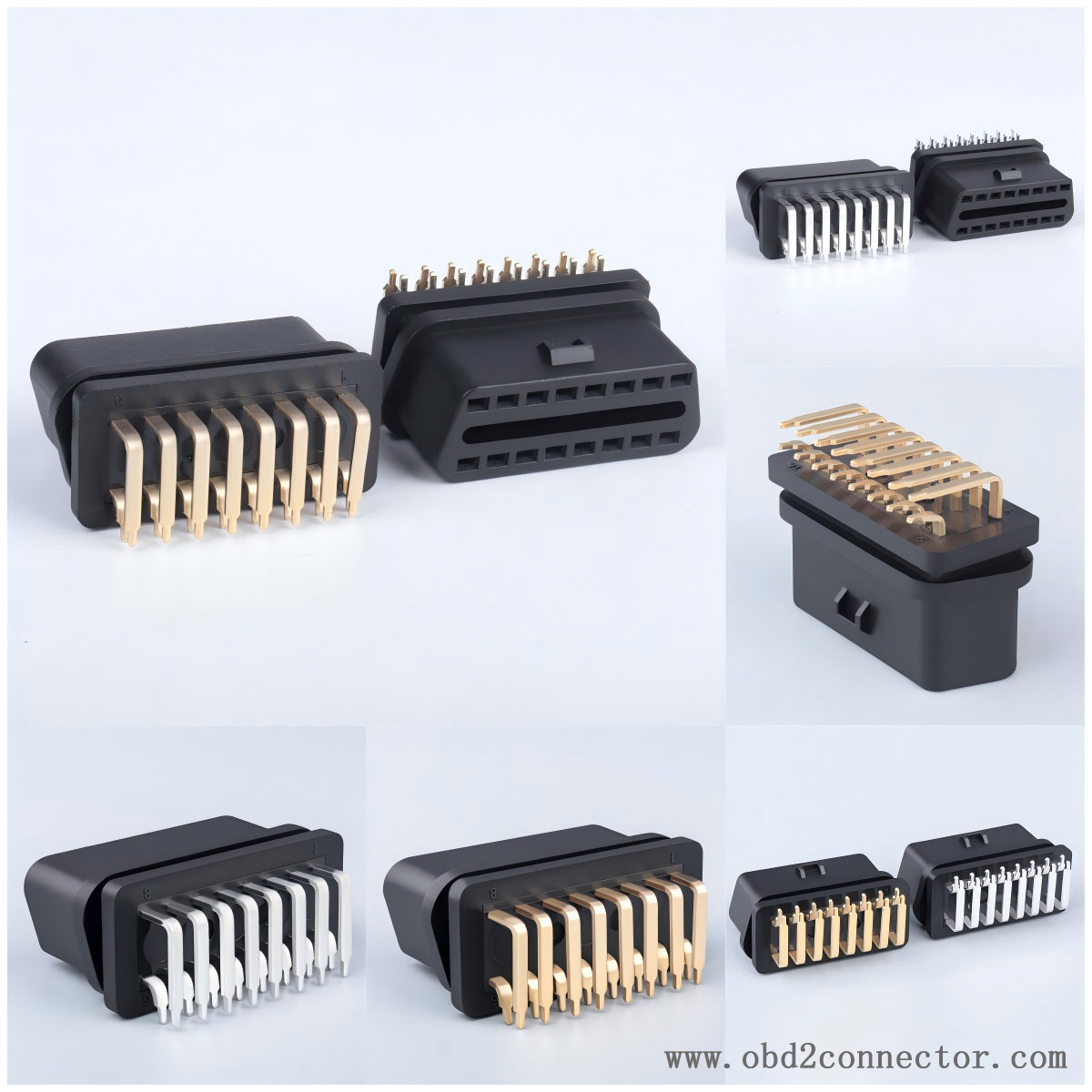OBD2 connector for real-time data monitoring and analysis of vehicles in vehicle management
The OBD2 (On Board Diagnostics II) connector is the core interface of the vehicle management system, which enables real-time monitoring of vehicle status through standardized protocols. The following are its specific application scenarios and values in vehicle management:
Real time data monitoring and analysis
The OBD2 connector can read real-time vehicle sensor data and system operating parameters, providing basic information support for vehicle management:
Key monitoring parameters
Engine system: RPM, water temperature, intake temperature, fuel pressure, throttle opening, etc.
Emission system: oxygen sensor signal, EVAP (fuel vapor) system pressure, three-way catalytic converter efficiency.
Transmission system: shifting timing, clutch slip rate, oil temperature, gear signal.
Chassis and safety systems: wheel speed, ABS working status, tire pressure (TPMS), steering angle.

Application scenarios
Fleet management: Real time tracking of vehicle location, fuel consumption, driving habits (frequency of rapid acceleration/deceleration) through OBD2 adapters (such as GPS+OBD2 combination devices), optimizing route planning and reducing operating costs.
New energy vehicle management: Monitor battery voltage, SOC (remaining charge), charging and discharging status to prevent battery overheating or degradation.
Driving behavior analysis: Insurance companies assess driver risks (such as speeding and excessive idle time) through OBD2 data and customize differentiated premiums.